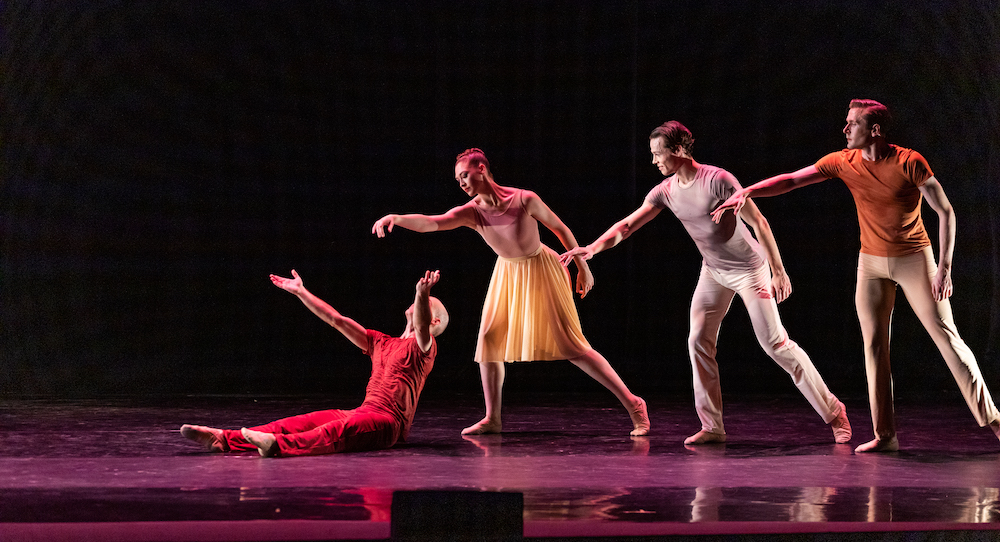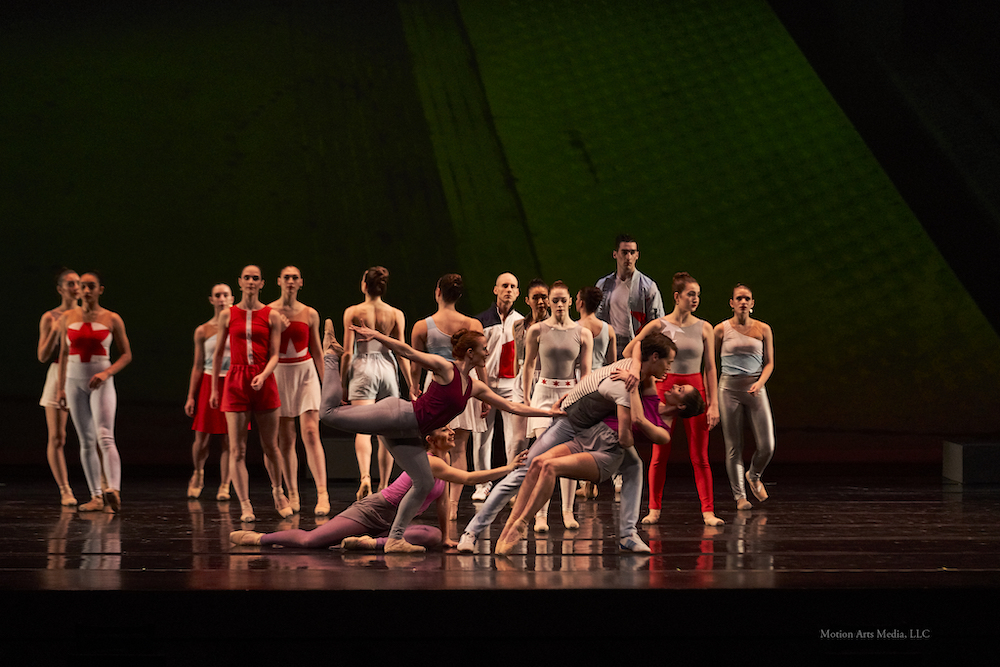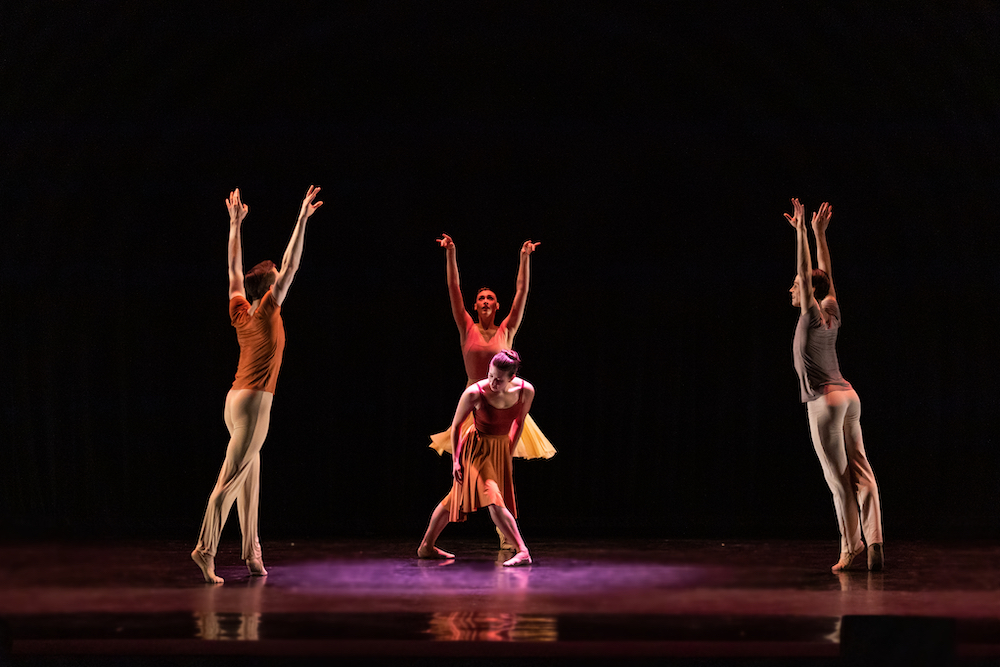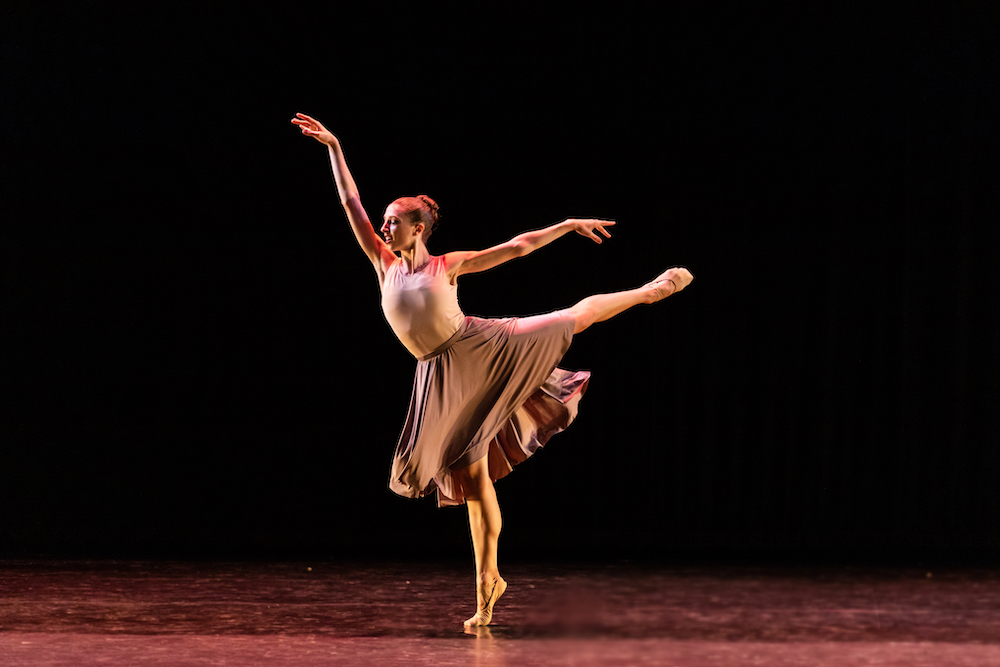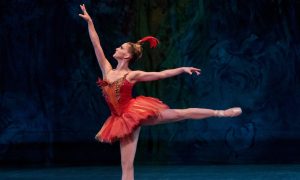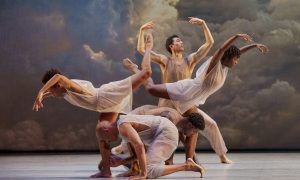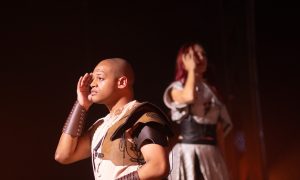Ballet 5:8 was founded in 2012, by Julianna Rubio Slager and Amy Sanderson. Birthed out of a shared desire to use dance to dialogue with what’s happening in today’s world, Ballet 5:8 has since created over 50 original works. Dance Informa had the opportunity to speak with Artistic Director and Resident Choreographer Slager to learn more about the heartbeat of Ballet 5:8, and the company’s recent partnership with International Justice Mission (IJM) for The Power of Art and Stories.
Before diving into Ballet 5:8’s collaboration with IJM, Slager shared about her creative process as resident choreographer. “There’s a lot of things in the world that I want to explore, and I’m thankful I haven’t lost my curiosity yet. Curiosity about the world around us, the people around us – what they’re thinking and feeling – undergirds the creative and artistic process. It’s such a broad world – there’s so many things to touch on; most of the time, I feel like we don’t have enough time to get to them!”
This curiosity fuels Slager to connect with audiences on an emotional level. “I love going to the theater and watching a piece where I feel seen. There’s so much in our society where we feel isolated, particularly now coming out of quarantine. More than ever when you go to the theater, you want to connect and feel seen. When you make dance just about entertainment, you’re losing so much of the depth of that substance, which is empathy. It’s us as humans acknowledging each other’s hurts and triumphs. Dance is a communal way to process our emotions. My hope is that dance can become more of that, and less showmanship.”
With this hope driving Ballet 5:8’s creative process, linking arms with IJM was a no-brainer. IJM is a global organization that protects people in poverty from violence by partnering with local authorities to combat trafficking and slavery, violence against women and children, and police abuse of power.
“IJM did not have a Chicago headquarters until last year,” Slager explains. “When they opened their new office, one of their representatives reached out because we had partnered with Refuge for Women a couple of years back on another ballet we created, Reckless, which dealt deeply with the issues of sex trafficking. IJM wanted us to unite under one banner to create an evening that showed the impact of storytelling, and how that can move peoples’ hearts when it comes to issues like trafficking. The program developed out of a shared vision for how art can help us both process and open doors to discussion around these sensitive topics.”
An exciting element of the program was sharing the story of Cassie, a young girl who was a dancer prior to being pulled into trafficking. “Cassie is collaborating with one of our dancers on a piece that they will perform,” says Slager. “It speaks to her journey through trafficking, and ultimately to the freedom that she’s found on the other side. It’s a really special part of the program.”
In addition to Cassie’s story, IJM spoke about its work, while Ballet 5:8 presented Solace, choreographed by Matthew Rushing, the associate artistic director of Alvin Ailey American Dance Theater. “It’s about rhythms of coming to and going away from,” Slager reveals. “It’s an exceptional work that evokes the emotions of loneliness and the joy of freedom. It shows very clearly the contrast that survivors feel between the loneliness of the experience, but then also the celebration of where IJM hopes for their people to come to.”
Ballet 5:8 first addressed the topic of trafficking through Slager’s Reckless, based on the Biblical story of Hosea and Gomer. Slager allows Gomer’s voice to narrate the tragic and misunderstood realities of human trafficking. “We performed it coming out of the pandemic but had created it during the pandemic for a lot of reasons, one of them being that trafficking spiked during the pandemic, and so did domestic violence. That sparked discussion within the company about awareness, and long story short, ended up in a full-length ballet about a trafficking survivor. We partnered with Refuge for Women in Chicago, Rebecca Bender Initiative in Dallas, and Ransomed Life in San Antonio.”
Slager expounds on the experience partnering with these organizations. “It was so moving because we met quite a few survivors during that journey. It changed us. It’s one thing to read and hear, but when you speak with someone who’s been through that very difficult experience, the way that it shifts your perspective is unforgettable. Ever since then, we’ve been looking for more opportunities to bring awareness. Art is a fabulous way to help others walk a mile in someone else’s shoes. There’s a lot of misconceptions and judgment that goes with trafficking. The whole company has gained a real passion and appreciation for our role to elevate those voices.”
When asked how she envisions dance being used to raise awareness of the trafficking crisis, Slager shares a two-pronged approach. “One thing dance does is it allows people to view the human body as something that is marvelous but not hypersexualized. Dance has this ability to show the power, athleticism, and raw physique of a woman that doesn’t look like what we see in TV and magazines. In a more poignant sense, whenever people are creating ballets that are specific to different issues, awareness is 95 percent of the battle. What’s interesting with trafficking is so much can be prevented when people know the signs and what to look for. When we do pieces on trafficking, we’ll include little moments of what it looks like when you see someone being trafficked. It gives the audience an immediate education on what to look for. Partnering with groups like Rebecca Bender Initiative or Refuge for Women is so valuable because the audience can walk straight out of the theater and have resources to put into action the empathy that’s been stirred up in the course of the performance.”
Slager clearly explained dance’s unique ability to bring attention to human trafficking. “When we watch somebody else interact with a situation, even in a theater setting, our brains are hardwired to mirror that and understand on a much deeper level. Other art forms are lovely, but none of them showcase physical movement like dance does. About 80 percent of human interaction is gauged off of body language; only 20 percent of how we relate to each other is words. When you take away the words, I think we’re less distracted by trying to figure out the verbal cues, and we’re really keyed into that 80 percent of body language. It allows us to strip back some of our pre-conceived notions and some of the buzz words that can be polarizing in a discussion like trafficking. What I’ve found to be true with the audience is it brings everybody’s guard down to where they’re able to engage with the subject from a more empathetic place.”
Although The Power of Art and Stories has already passed, Slager anticipates more collaborations with IJM in the future. “They’ve been so wonderful to work with,” she says. “I’m excited to see whatever collaborations will be in the works. We’re certainly kindred spirits!”
To learn more about Ballet 5:8, visit ballet58.org, or follow them on social media @ballet58 (Instagram) and @ballet58chi (TikTok). Additionally, Ballet 5:8 offers a variety of original works to rent at online.ballet58.org.
By Melody McTier Thomason of Dance Informa.


